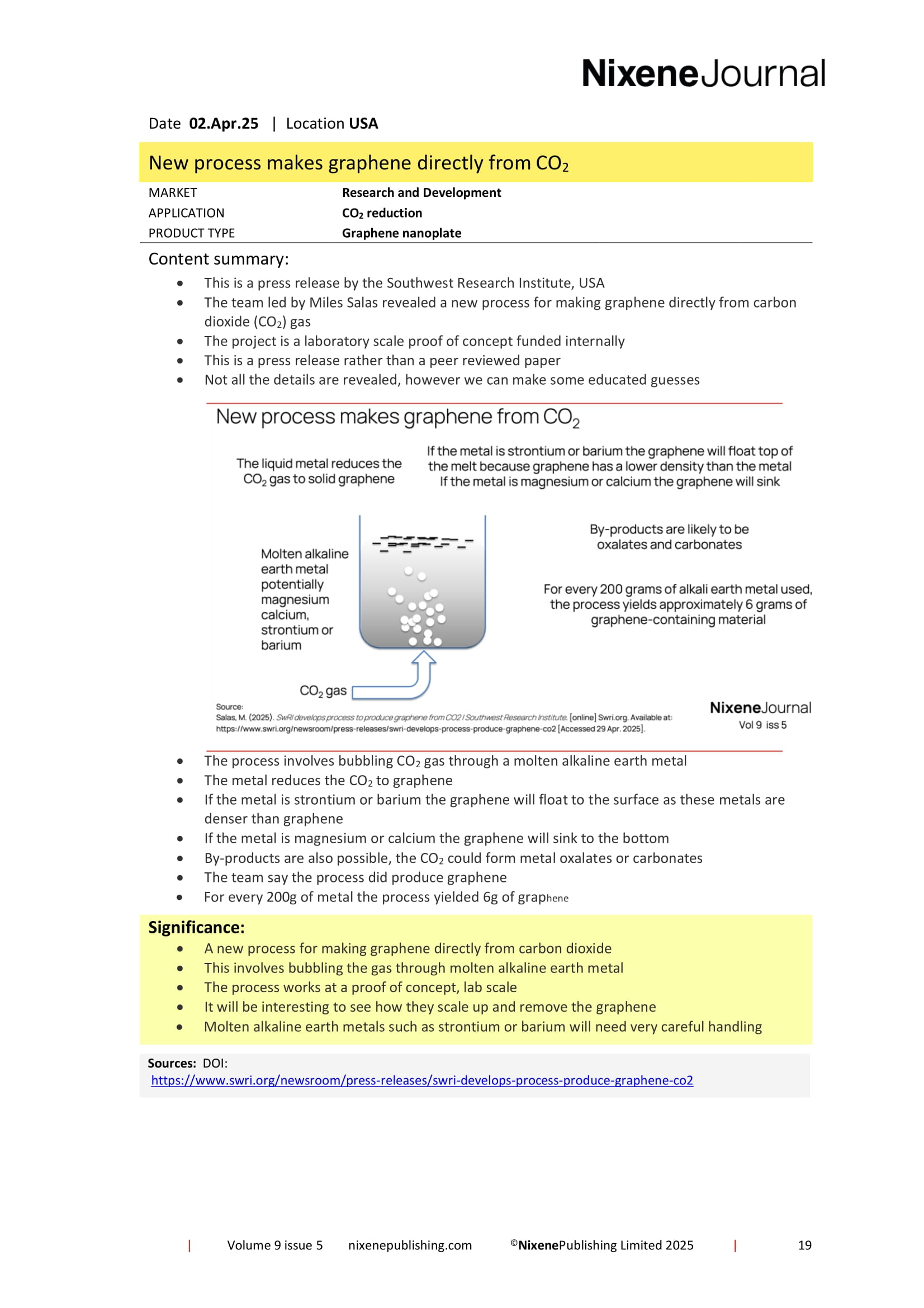Journals
This product is relevant to the following:
Material:
Other:
, ,Locations:
Markets:
Applications:
Product Types:
Technologies:
Related products
-
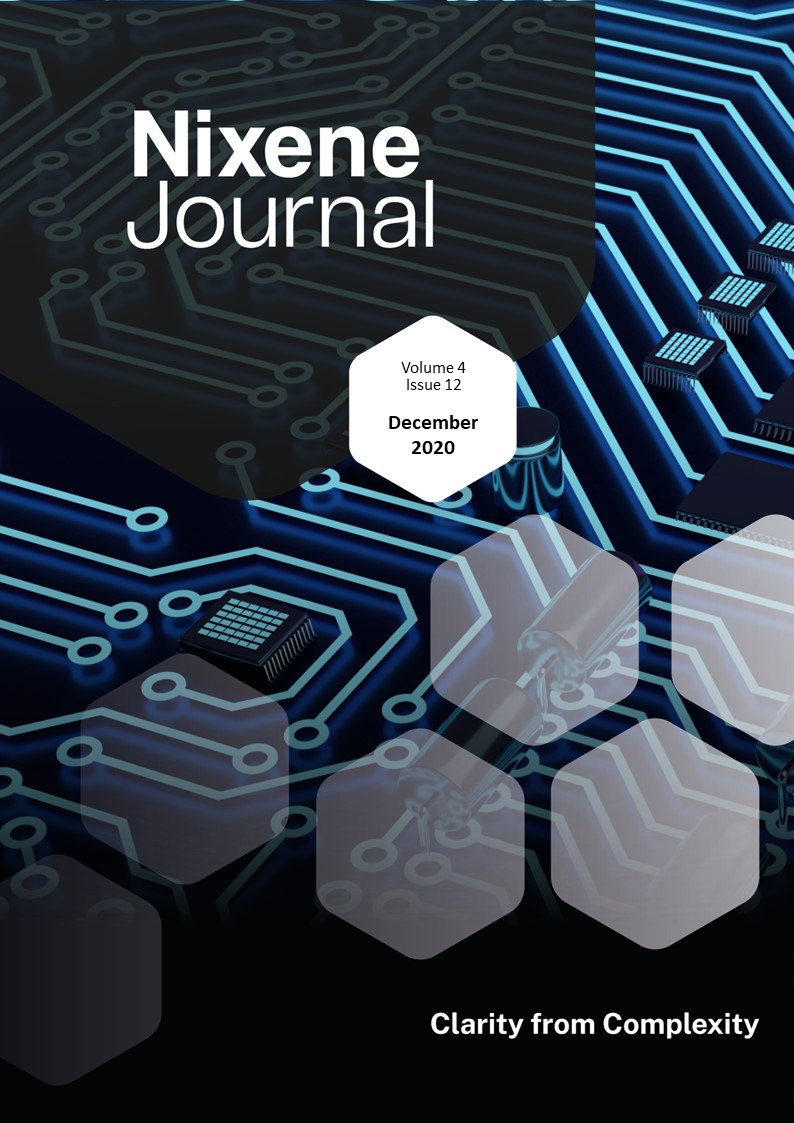
Vol 4 Issue 12
As fascinating as the technical developments are, it is the commercial side which needs highlighting in this summary this month. More evidence is mounting to support James Baker’s claim that graphene has reached a turning point and has overcome the hype of its early teens. We are starting to see noticeable movements in the five-year share price trends of graphene companies. Companies that have antiviral or battery applications are beneficiaries of renewed attention. I’ll draw your attention to the graphene companies share price section of this issue. There is a new graphene company, Sparc Technologies, launched on the Australian stock exchange. It has a deal to commercialise patents developed by the University of Adelaide and has attracted significant investor interest. Another Australian company GMG reported its series C investment round of AUD3million was oversubscribed. The company plans to float on the stock exchange next year. A new company called Toraphene has appeared making an eponymous product that is a graphene biopolymer that makes biodegradable packaging. It launched as a crowdfunded initiative and has raised nearly GBP700K already, double its ask. We have contacted the company and asked for more technical information about its products. Integrated Graphene Ltd, (IG) announced the completion of a GBP3.1 million round of investment in the business, IG is a UK Scottish-based tech company that manufactures a graphene foam that they call Gii. The company is targeting medical diagnostics and supercapacitors markets. Estonian supercapacitor company Skeleton is continuing its unstoppable rise. It announced it has raised EUR41.3 million ($48.5 million) in Series D financing This brings its total capital raised to over EUR93 million ($109 million) Lots of activity around graphene enhanced lithium-ion batteries for electric vehicles. As far as we can tell, this seems to be creating improvements in the life of the battery by maintaining the integrity of the electrodes. Improvements in charging time are also claimed. Tellingly, there is no evidence that graphene is improving the energy density of batteries. The rush to electric vehicles is creating a market pull for better batteries that the technology does not seem to be able to match. For now, if you want to travel further in your battery powered car, then you have to add more batteries. We finally discovered which tool is being used for the at-line Raman spectroscopy quality control for the production of graphene powders. First graphene has acquired the QT-Sampler made by BWTEK Metrohm. This allows the company to measure flake aspect ratio and number of layers of the graphene powders they produce. The data is used for statistical process control which means they have a sophisticated approach to making and characterising a consistent product. Adrian Nixon, 1st December 2020£45.00 View product -
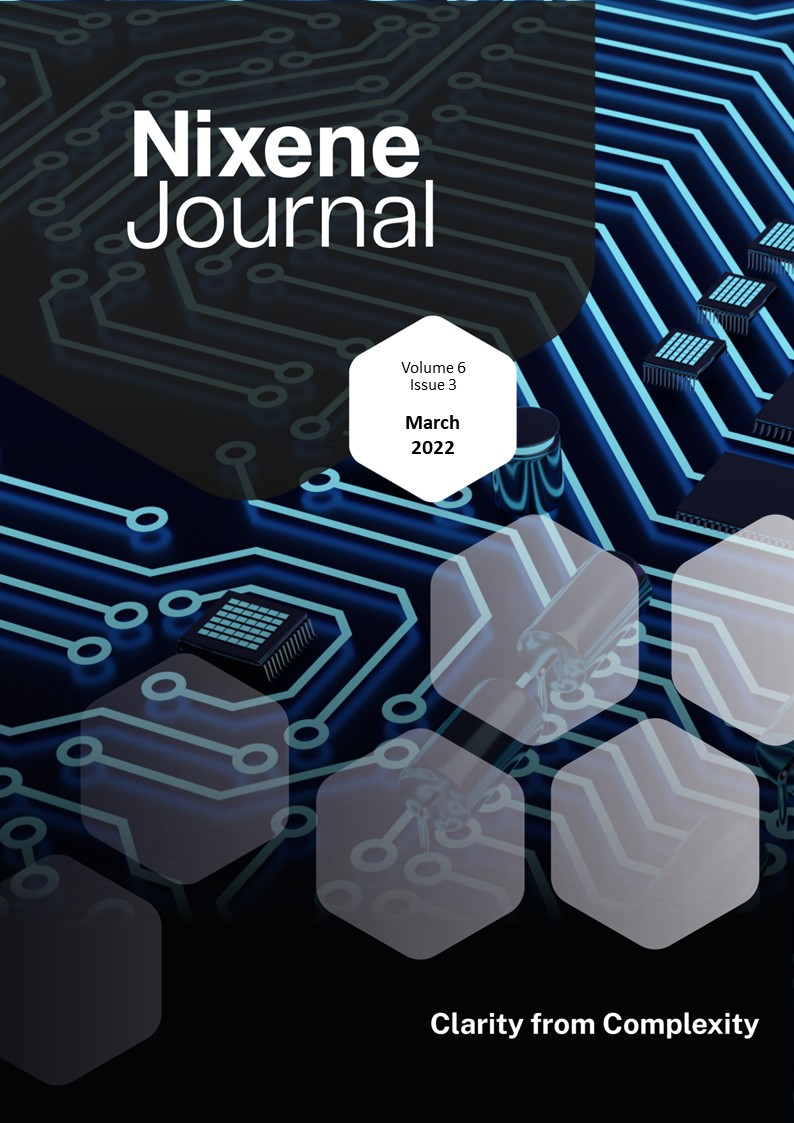
Vol 6 Issue 3
This month Rob and I gained first-hand experience of the benefits of adding graphene to enhance concrete. We were given a tour of the new Mayfield development in Manchester, UK. The site is still under construction, and parts of it are now open to the public. One of these areas is the new mezzanine floor area directly underneath the old Mayfield rail station. We were standing on what seemed to be an unremarkable concrete floor. It becomes remarkable when you know what to look for. We were lucky to have one of the joint MDs Alex McDermott as our guide. The whole floor was constructed and finished in a fraction of the time it would normally take. Also, the floor is flawless, with no expansion joints or cracking. There is also no sign of shrinkage. We knew graphene-enhanced concrete was strong. Now we know there are other benefits emerging. Graphene is the gift that keeps giving. Graphene-enhanced concrete is being trialled in other parts of the world too. In New Zealand, First Graphene has partnered with a particularly active distributor and trial pours are already underway. In the USA, Debbie discovered that the US Army ERDC also has an active interest in graphene enhanced concrete. They are discovering the same strength and fast cure benefits that graphene confers to the finished construction. You can find out more in her special feature. Battery technology continues to be developed. First Graphene and Zentek have both turned their attention to silicon anodes. Silicon is an attractive material to make Li-ion battery electrodes. The problem is it expands by up to 300% when lithium migrates into the crystal structure during charging. Using silicon particles coated with graphene nanoplates seems to mitigate this problem. Transition metal dichalcogenides (TMDs) are another two-dimensional (2D) material. Akanksha Urade wrote a good overview of the technology this month, and separately the Graphene Flagship published an overview of their interest in these materials. They have been working on using TMDs as next generation heat pumps. They can be used in heating and cooling applications and also as thermoelectric generators. This work is still at the early stage, however there are well funded teams working in this research area so we can expect to see meaningful progress in the future. Chemical vapour deposition (CVD) graphene used to be talked about in terms of just a research project. Now we know industrial processes can make graphene films by the kilometre and at high speeds. The development of the technology has matured from academia to industrial R&D. One of the companies in Korea, Charmgraphene has now developed graphene separation and transfer technology to the point where they can make freestanding graphene films at square centimetre scale and in thicknesses ranging from three to ten atomic layers thick. You can read about more of the astonishing progress being made in this field by reading this packed issue. Adrian Nixon, 1st March 2022£45.00 View product -
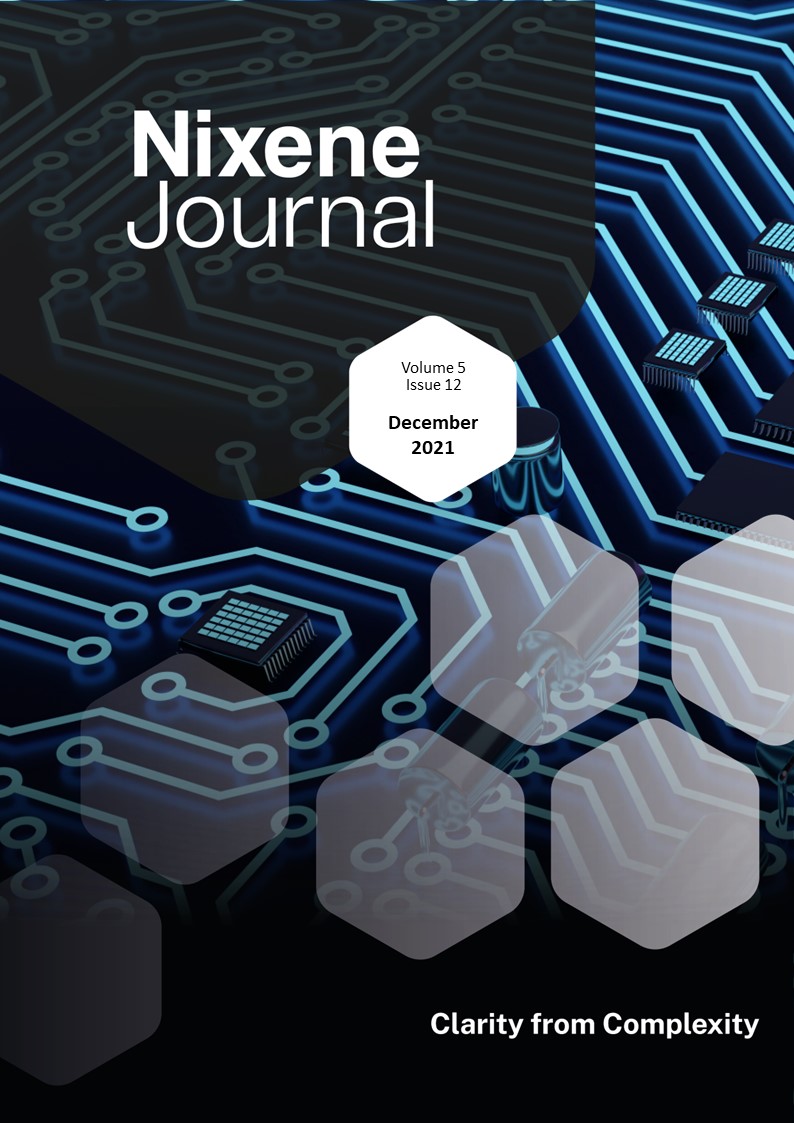
Vol 5 Issue 12
Two new graphene companies have appeared on the radar this month. They both use a similar process to make graphene from methane gas with hydrogen as a by-product. Looking at the patents of the companies they both use a microwave reactor to tear apart the carbon and hydrogen atoms in methane, the carbon atoms recombine as graphene and the hydrogen atoms recombine to form hydrogen gas. There the similarities pause because the two companies have very different approaches for how to market their developments. The first company is Levidian, they are a relaunch of Cambridge Nanosystems from the UK. Their business model is focussed on using waste methane gas from a customer’s process. They use the reactor to lock up the carbon in the methane as graphene and claim carbon capture credits. The graphene production is secondary to this marketing approach. Using disclosures by the company, I was able to create a mass balance for the Levidian method. It appears that the process captures carbon from methane with around 30% efficiency (p.34). Not bad, but still some further progress to make. The second company is California based Lyten who publicly disclosed their activity just a few weeks ago. They were formed in 2015 and have been operating in stealth mode. Their graphene is used to make the electrode for a lithium sulphur (LiS) battery that has three times the energy density of normal lithium-ion batteries (p.35). They have probably decided to come out of stealth mode to raise capital for the scaling up of their process. The company is currently talking with five original equipment manufacturers (OEMs) in the automobile industry. The weakness of LiS batteries has been their capacity fade with repeated charge / discharge cycles. Lyten say they have improved on previous LiS designs so they might have something of interest for manufacturers of electric vehicles. Levidian patented their process in 2014 and Lyten in 2015. Lyten references the Levidian patents in their applications. This is how we know the two processes are very similar. Things could get interesting if one or the other company makes a lot of money in the future. As Elon Musk observed “A patent is like buying a lottery ticket to a lawsuit”. Staying with graphene powder manufacture, we feature John van Leeuwen of Universal Matter in a special feature (p.7). He is leading the drive to scale up the flash graphene process developed by Prof James Tour at Rice University. Universal Matter is definitely a company to watch in the future. All these graphene manufacturing processes are bottom-up, self-assembling graphene atom by atom to create high quality powders. These processes are in their infancy at present. If they can be scaled, they could disrupt the graphene-from-graphite manufacturers in future as they promise controllable quality graphene. This potential market disruption is something we’ll explore in the future, in the meantime there is much more to explore in this issue… Adrian Nixon, 1st December 2021£45.00 View product -
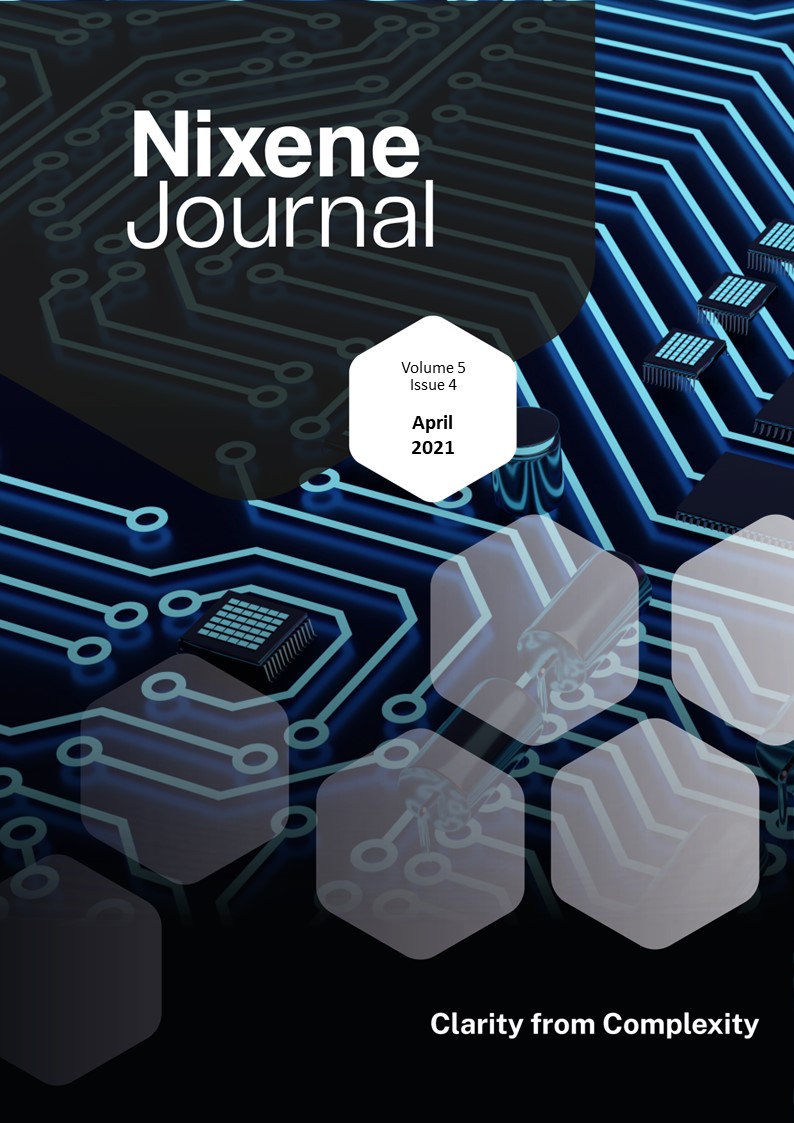
Vol 5 Issue 4
I need to start this month’s issue with a correction. In the last issue (Vol 5 iss 3 p.13) I stated that Kostya was moving from Singapore to Russia. Thanks to our rather well-informed readership, I have been told that Kostya is indeed taking up the position of head of the Brain and Consciousness Research Centre in Moscow, Russia. However, he is not leaving the National University of Singapore. Onward with our usual Accuracy, Brevity and Clarity. Normal ABC service resumes. This month we had a meeting with Prof. James Tour and the GEIC. Thanks Debbie. The work on Flash Graphene (FG) is advancing faster than we realised. Prof. Tour testified to Congress about the benefits graphene can bring to buildings and infrastructure in the USA. He testified to Congress in 2017 and now said “Four years later I’m here to report that the future has arrived” (see page 21). You will know that FG can be made from anything that contains carbon. Waste plastic is a favourite (Vol 4 iss 8 p.9). We learned that Flash Graphene can now also be made from furnace black, the by-product from the leading ‘green’ manufacturing process for Hydrogen (see page 22). The Rice University laboratories and spin out company, Universal Matter, are working on the production of Flash Graphene. The pace is fast. Every nine weeks doubles the scale at which FG can be made. Flash Graphene is something we’ll watch closely. If the team can continue to scale up the process it has the potential to make many other methods for making graphene powders obsolete. We have three special features this month. A review the state of the industry for manufacturing large scale sheet graphene, and interviews with two graphene company business leaders, Maví Figueres and Dylan Banks. Such is the pace of change, while we were writing the special feature, General Graphene sent samples of their monolayer and multilayer graphene to the International Space Elevator Consortium (ISEC). The samples will be sent to the International Space Station (ISS) for testing. We have the first pictures of these large-scale graphene samples in this issue (see page 29) It is worth noting that Graphene has gone from impossible to industrial in just 17 years. Astonishing. Other things to draw your attention to include an emerging controversy with graphene facemasks in Canada (see page 30) and new perovskite 2D materials start to feature in this issue. You’ll discover more as you read on. Adrian Nixon, 1st April 2021£45.00 View product

